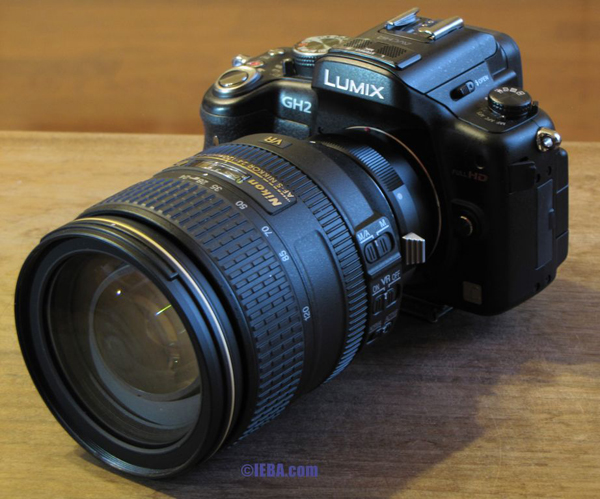Review: Nikon D800 DSLR, Part 2: Usability and Image Quality
In Part 1 of this two-part series on the Nikon D800, I looked at the operation and functionality of the D800 DSLR as a video camera. Now, in Part 2, I'll share some usability notes, as report the results of some audio and video tests (with test footage) comparing the D800 to another highly regarded DSLR, the Panasonic GH2--to see if a lower-priced but very capable DSLR can measure up with quality glass--and to a more traditional prosumer camcorder.
Conclusion
I really like the D800. As a video camera, it provides some really incredible-looking footage for the cost of a mid-level prosumer camcorder. But you'll have to use a separate external audio recorder to get audio as good as the D800's video. You also have to again be wary of patterns and situations that will cause moire in your recorded image. But the latitude of the image and the lack of compression artifacts in graded footage give you a lot of latitude to play with in post. Couple that with full-frame SLR aesthetics and you can easily get a look that's a vast departure from the typical "video" look.
I don't quite understand why we have to deal with moire when the camera is clearly working to smooth out the detail in the image (at the loss of resolution), but my results show that the detail is lost and the moire is still there. Perhaps a firmware upgrade will improve the algorithms used, kill the moire, and pull this blurry cellophane wrapper off the video image. Time will tell.
If you're new to the game, understand that you'll also have to budget for some good glass if you want true, shallow DoF video from a big-aperture lens. The 24-120mm lens I had is an excellent choice for general, all-around coverage. The constant f/4 was an enjoyable feature to have. The lens provided easy access to adjust to any framing I needed when setting up the shot. Just don't try to use it to zoom during the shot.
Lastly, as a still camera, the D800 is really hard to beat. Fast, beautiful, and super-high resolution. There's no camcorder, at any level, that can give you anything remotely close to the stills from the D800. Getting both the still camera and the video camera in one body is a very nice package indeed. Being able to toggle between incredible stills and very good video, with the flick of a finger, is so, so convenient.

Figure 7. Frankencamera. Nikon glass on the GH2. Too bad I can't power the optical stabilizer (VR) features.
Related Articles
In the P7700, Nikon has improved on earlier P7000 models with numerous video formats and a microphone input, plus a tilt-swivel display and several under-the-hood improvements. Is this the video-and-stills powerhouse I've been waiting for?
D7100 features 24.1 megapixel CMOS sensor, 51 focus points including 15 cross-type sensors, 100-6400 ISO range, and new WU-1a wireless mobile adapter
In this two-part series, we'll examine how well Nikon's much-heralded D800 DSLR works as a video camera, in terms of operability and functionality. In part two, we'll report on some audio and video tests comparing the D800 to another highly regarded DSLR, and to a more traditional prosumer camcorder.